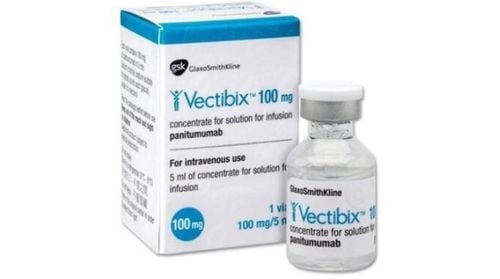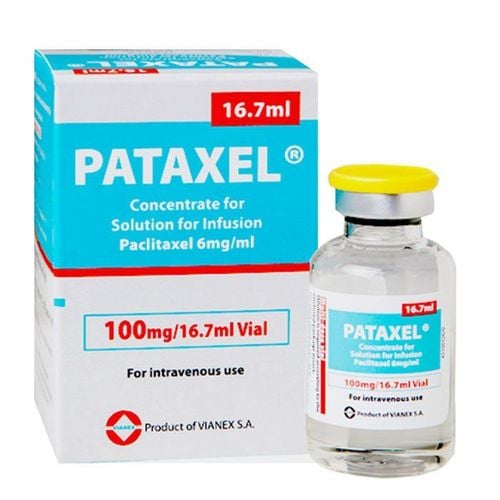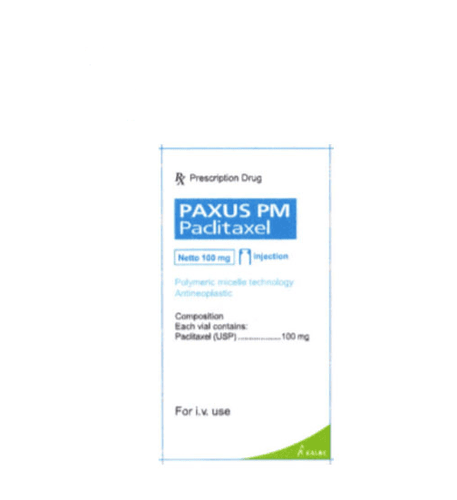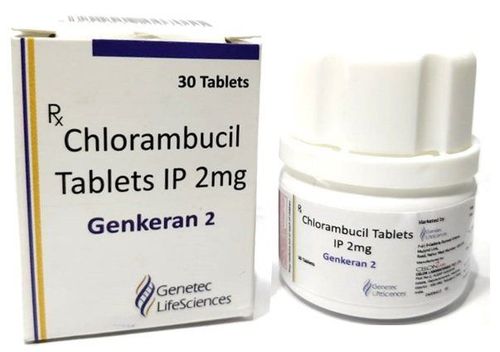This is an automatically translated article.
Paclitaxel is an anti-cancer agent, including ovarian cancer, breast cancer or non-small cell lung cancer. This active ingredient is present in the product with the trade name Hepargitol. So what should be noted when using Hepargitol?
1. What is Hepargitol?
Hepargitol is a product of TW1 Pharmaceutical Company, the main ingredient is Paclitaxel and is prepared in the form of a solution for intravenous infusion.
Hepargitol has the following strengths:
Hepargitol 30 mg/5ml; Hepargitol 100 mg/16.7ml; Hepargitol 150 mg/25ml; Hepargitol 300mg/50ml.
2. Indications of the drug Hepargitol
Indications of Hepargitol in the following cases:
Hepargitol is used to treat metastatic ovarian cancer when anthracycline and platinum therapies have failed or are contraindicated; Hepargitol in combination with Doxorubicin is the regimen of first choice in the adjuvant treatment of metastatic breast cancer. In addition, Hepargitol is also indicated for the treatment of metastatic breast cancer when failure of Anthracycline therapy or recurrence of breast cancer after 6 adjuvant regimens; Hepargitol is also indicated for the treatment of non-small cell lung cancer and AIDS-related Kaposi's sarcoma.
3. Contraindications of Hepargitol
Contraindications of Hepargitol in the following cases:
Contraindications to the use of Hepargitol in patients with hypersensitivity to Paclitaxel or any component of the preparation, especially cremophor EL oil; Patients with neutrophil count less than 1500/mm3 or with obvious symptoms of motor neuropathy; Pregnant or nursing women should not take Hepargitol.
4. Dosage, how to use Hepargitol
The appointment and use of Hepargitol must be carried out by a specialist with experience in anti-cancer chemotherapy.
Some therapies need to be conducted before using Hepargitol:
Dexamethasone: Dose 20mg x 2 times, can be taken orally (before 12 hours and 6 hours) or intravenously (before 14 hours and 7 hours); Diphenhydramine: A dose of 50mg intravenously about 30-60 minutes before taking Hepargitol; In addition, it is possible to prescribe some H2 antihistamines such as Cimetidine, Famotidine or Ranitidine. Dosage of Hepargitol in the treatment of ovarian cancer:
First line regimen: Combination of Hepargitol with Cisplatin for the initial treatment of advanced ovarian cancer in 2 different regimens selected according to the ability to respond of patients: Regimen 1: Hepargitol 175 mg/m2 (body area) intravenously infusion 3 hours, then intravenous infusion of Cisplatin 75mg/m2, every 3 weeks to perform a course of treatment; Regimen: Hepargitol dose of 135mg/m2, intravenous infusion 24 hours, then Cisplatin dose 75mg/m2, a course of treatment 3 weeks apart; Second-line or next-line treatment for advanced ovarian cancer: Patients with metastatic ovarian cancer who have not responded to first-line or second-line chemotherapy are recommended to receive Hepargitol at doses of 135 or 175 mg/m2. IV infusion over 3 hours, repeated every 3 weeks if tolerated. Dose of Hepargitol to treat breast cancer:
Adjuvant treatment of breast cancer with lymph nodes: Hepargitol dose of 175 mg/m2 IV infusion over 3 hours, every 3 weeks for a total of 4 sessions, then continue after completion. continue to use Doxorubicin in the combination regimen; Second-line therapy for advanced breast cancer: Metastatic breast cancer that has been refractory to chemotherapy or has recurred within 6 months of adjuvant therapy is recommended using Hepargitol 175 mg/m2, intravenous infusion in 3 hours, every 3 weeks. Dose of Hepargitol for treatment of non-small cell lung cancer:
Patients with non-small cell lung cancer who have no indication for surgery or radiotherapy are recommended to use Hepargitol 135mg/m2 intravenously for 24 hours, then infused Cisplatin intravenous dose 75mg/m2, every 3 weeks. Or another regimen is Hepargitol 175mg/m2 intravenous infusion over 3 hours, then Cisplatin 80mg/m2, every 3 weeks. Dose of Hepargitol for AIDS-related Kaposi's sarcoma:
Patients with advanced HIV infection should only be started on Hepargitol if the neutrophil count is at least 1000/mm3; Patients with AIDS-related Kaposi's sarcoma who do not respond to first-choice or next-line chemotherapy can have 2 regimens with Hepargitol, including: Regimen 1: Hepargitol 135mg/m2 intravenous infusion in within 3 hours, every 3 weeks; Regimen 2: Hepargitol dose 100mg/m2 intravenous infusion in 3 hours, every 2 weeks; The dose of Hepargitol may be reduced if the patient has hepatic impairment. Some notes on the dosage of Hepargitol:
Patients with a severely reduced granulocyte count below 500/mm3 during long-term treatment with Hepargitol should reduce the dose by 20%; A booster course of Hepargitol is only performed when the granulocyte count is above 1500/mm3 and the platelet count is at least 100000/mm3; Cyclic use of Hepargitol in HIV-infected patients should only be repeated when the granulocyte count is at least 1000/mm3.
5.Hepargitol side effects
Common adverse effects when using Hepargitol include:
Symptoms of hypersensitivity (severe in about 2% of patients), including congestion, rash, poor appetite or peripheral edema ; Peripheral neuropathy; Bone marrow failure, severe decrease in neutrophil count (less than 500/mm3 seen in 14-75% of patients), decreased platelet count (17-52%), anemia with Hb less than 8 g/dL (16). - 22%); Asymptomatic hypotension (incidence 4-12%), asymptomatic bradycardia (about 3% of patients) and electrocardiographic disturbances (occurring in about 14-23%); Nausea, vomiting (52-88%), diarrhea (about 38%), mucositis (20%), constipation (18%) or intestinal obstruction (4%); Hair loss (over 90% of cases); Irritation at the injection site (13%); Increased liver enzymes more than 5 times above normal (5%), alkaline phosphatase more than 5 times (5%) and sharply increased serum bilirubin (1%); Muscle pain, joint pain (60%), in which 12% of cases are very severe; Bacterial infections (about 12-30%). Some rare undesirable effects of Hepargitol:
Severe hypersensitivity reactions such as hypotension, angioedema, dyspnea, generalized urticaria; Atrioventricular - ventricular block; Faint; Hypotension with coronary artery stenosis.
6.Hepargitol drug interactions
The active ingredient Cisplatin (usually used after Hepargitol ) if used before will reduce the renal excretion of Hepargitol by 20 to 25% and increase the risk of bone marrow suppression.Using Hepargitol with Doxorubicin may increase the blood level of Doxorubicin, thereby increasing the effectiveness of cancer treatment and increasing the risk of unwanted effects on the heart.
In vitro, active substances such as Ketoconazole, Verapamil, Diazepam, Quinidin, Dexamethasone, Cyclosporin, Teniposide, Etoposide and Vincristin or protease inhibitors can interfere with the metabolism and elimination of Hepargitol.
Inducers of cytochrome CYP450 or CYP2C8, CYP2C9, CYP3A4 may decrease blood levels of Hepargitol, including the anticonvulsants Phenobarbital or Phenytoin.
7.Precaution when using Hepargitol
Hepargitol should be used with caution in the following cases:
Hepargitol is not recommended for use in patients with elevated liver transaminases 10 times the upper limit of normal or serum bilirubin levels > 7.5 mg/100 ml or above 5 times the normal limit. Hepargitol should be used with caution in patients with cardiovascular disease, a history of peripheral neuropathy (chemotherapy or diabetes). In the preparation Hepargitol contains the excipient Cremophor EL, which is more likely to cause anaphylactic-type responses due to increased histamine release in people who are hypersensitive to Cremophor EL. Therefore, patients should receive anaphylaxis prophylaxis before using Hepargitol and should prepare anaphylactic measures when necessary. When multiple drugs are used, taxane derivatives (eg, paclitaxel, docetaxel) should be given before platinum derivatives to reduce the risk of myelosuppression. Elderly patients are at increased risk for hepargitol toxicity, including neuropathy or decreased granulocyte counts. As a general rule, pregnant women should not take chemotherapy drugs, especially during the first 3 months of pregnancy. Hepargitol has been shown to have embryo and foetotoxicity or impaired fertility when studied in rats. Patients should avoid the use of Hepargitol during lactation or must discontinue breastfeeding if the use of Hepargitol cannot be substituted. Hepargitol may cause side effects such as fatigue (very common) and dizziness (common). This may affect the patient's ability to drive and use machines. Hepargitol drug. The active ingredient is Paclitaxel, which is an anti-cancer agent including ovarian cancer, breast cancer or non-small cell lung cancer. To ensure effective treatment and avoid unwanted side effects, patients need to strictly follow the instructions of the doctor, qualified medical staff.
Follow Vinmec International General Hospital website to get more health, nutrition and beauty information to protect the health of yourself and your loved ones in your family.













